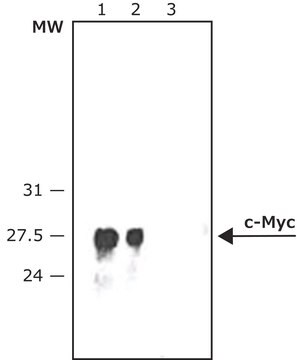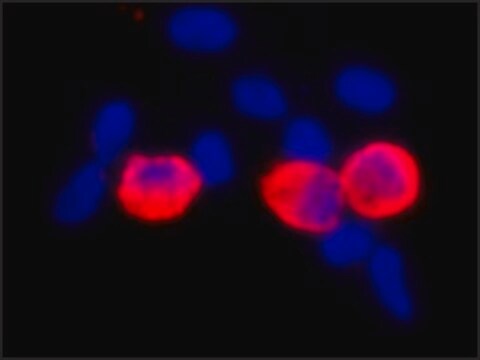SAB4200742
Anti-c-Myc-Peroxidase antibody, Mouse monoclonal
clone 9E10, purified from hybridoma cell culture
Sinónimos:
Anti-MRTL, Anti-Myc, Anti-bHLHe39, Anti-v-myc avian myelocytomatosis viral oncogene homolog
About This Item
Productos recomendados
biological source
mouse
Quality Level
conjugate
peroxidase conjugate
antibody form
purified from hybridoma cell culture
antibody product type
primary antibodies
clone
9E10, monoclonal
form
lyophilized powder
species reactivity
human
packaging
vial of 100 μL
concentration
~2 mg/mL
technique(s)
immunoblotting: 1:250-1:500 using lysate of HEK-293T cells over expressing c-Myc fusion protein
immunohistochemistry: suitable
isotype
IgG1
UniProt accession no.
shipped in
dry ice
storage temp.
−20°C
target post-translational modification
unmodified
Gene Information
human ... MYC(4609)
General description
Specificity
Immunogen
Application
Biochem/physiol Actions
Physical form
Storage and Stability
Disclaimer
¿No encuentra el producto adecuado?
Pruebe nuestro Herramienta de selección de productos.
signalword
Warning
hcodes
Hazard Classifications
Skin Sens. 1
Storage Class
13 - Non Combustible Solids
wgk_germany
WGK 2
flash_point_f
Not applicable
flash_point_c
Not applicable
Certificados de análisis (COA)
Busque Certificados de análisis (COA) introduciendo el número de lote del producto. Los números de lote se encuentran en la etiqueta del producto después de las palabras «Lot» o «Batch»
¿Ya tiene este producto?
Encuentre la documentación para los productos que ha comprado recientemente en la Biblioteca de documentos.
Nuestro equipo de científicos tiene experiencia en todas las áreas de investigación: Ciencias de la vida, Ciencia de los materiales, Síntesis química, Cromatografía, Analítica y muchas otras.
Póngase en contacto con el Servicio técnico







